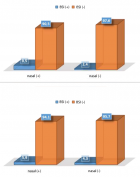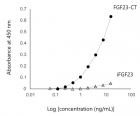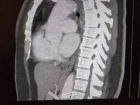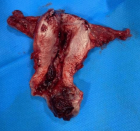Abstract
Research Article
Antibiotic induced changes to mitochondria result in potential contributions to carcinogenesis, heart pathologies, other medical conditions and ecosystem risks
Jorma Jyrkkanen*
Published: 02 October, 2020 | Volume 5 - Issue 3 | Pages: 163-171
With the discovery by Calghatgi (2013) that three common antibiotics (Abs) increased mitochondrial reactive oxygen (ROS) and lipid peroxide (LP) and depleted their natural absorbant glutathione led me to investigate further the potential impacts of these genotoxic substances on carcinogenesis. The range of impacts on mitochondria and cellular DNA varied by antibiotic to those consistent with known prior contributions to carcinogenesis. Specific cancers probably increased by these changes were HCC, RCC (KCC), CRC, cancer of the esophagus. Tumor suppressor gene mutations resulting from LP were noteworthy in this regard and mutations induced in CRC were consistent with those found in carcinogenesis of CRC. In addition depression of short chain fatty acids in microbiomes were found which depress the immune system increasing risk of all cancers. Many cancers were increased according to epidemiological studies linking Abs with elevated odds ratios, with one concern in particular, fatal breast cancer. The impact of loss of functionality of the mitochondria was also linked to depression of the citric acid cycle and therefore ATP which deflected metabolism to glycolysis, the Warburg mechanism also increasing risk of all cancers, favoured by cancer cells. In conclusion, some portion of many cancer types are probably increased in likelihood by number, type and frequency of Abs treatment and chronic residue exposure which varies from individual to individual. This led me to propose a three pronged carcinogenesis mechanism for Abs. 1. Cancer critical mutations 2. Immune depression 3. loss of mitochondrial functionality leading to Warburg effects. Damage to mitochondria were also noted by common pesticides tested in China and cancer associations were also found for many pesticides supporting a similar contributory etiology. Heart health concerns were raised by these findings because of the myriad mitochondria in the heart and because of long term reliability needs. Studies suggesting hearts were affected by Abs and pesticide exposure were presented. Because of their geographical ubiquitousness and the huge range of diseases associated with mitochondrial dysfunction, antibiotics and pesticides and bacteriocidal biocides are of concern for biodiversity and life in general. I propose research steps to evaluate Abs safety and suggest directions for further research and make suggestions on ways to ameliorate Abs toxicity.
Read Full Article HTML DOI: 10.29328/journal.jccm.1001104 Cite this Article Read Full Article PDF
Keywords:
Antibiotic; Mitochondria; DNA damage; P53 tumor suppressor cene; Mutp53; ROS; Lipid peroxide; Cell perforation; Cell rupture; Oxidative phosphorylation; Cancer; Carcinogenesis; Glycolysis; Warburg effect; Microbiome; Dysbiosis; Immune suppression; Pesticides; Mechanism; Clastogenic; Epigenetic silencing; Microrna; DNA; Heart
References
- Lisa Rapaport. 2019. Health News January 9, 2019 / 3:30 PM/Reuters.
- Wang X, Dongreol R, Johan A. Antibiotic use and abuse: A threat to mitochondria and chloroplasts with impact on research, health, and environment. Bioessays. 2016. 37: 1045–1053. PubMed: https://www.ncbi.nlm.nih.gov/pmc/articles/PMC4698130/
- Zhang H, Rodríguez LAG, Hernández-Díaz S.. Antibiotic Use and the Risk of Lung Cancer. Cancer Epidemiol Biomarkers Prev. 2008; 17: 1308-1315. PubMed: https://pubmed.ncbi.nlm.nih.gov/18544646/
- Sameer C. Bactericidal antibiotics induce mitochondrial dysfunction and oxidative damage in mammalian cells. Sci Transl Med. 2013; 5: 192ra85. PubMed: https://pubmed.ncbi.nlm.nih.gov/23825301/
- Granados-Chinchilla F, Rodríguez C. Tetracyclines in Food and Feeding stuffs: From Regulation to Analytical Methods, Bacterial Resistance, and Environmental and Health Implications. J Analytical Methods Chem. 2017: 1315497. PubMed: https://pubmed.ncbi.nlm.nih.gov/28168081/
- Nersessian AK, Zilfian Vrez N, Koumkoumadjian VA. Fanardjian.Inhibitory effect of rat immunization with tularemia vaccine on the in vivo clastogenicity of 4 anthracycline antibiotics. Mutation Research. 1991; 260: 215-218.
- Aldre KJ, Kerns RJ, Neil O. Mechanism of Quinolone Action and Resistance. Biochemistry. 2014: 53: 1585-1574. PubMed: https://pubmed.ncbi.nlm.nih.gov/24576155/
- Long H, Miller SF, Strauss C, Zhao C, Cheng L, et al. Antibiotic treatment enhances the genome-wide mutation rate of target cells. PNAS. 2016; 113: E2498-E2505. PubMed: https://www.ncbi.nlm.nih.gov/pmc/articles/PMC4983809/
- Gonzalez L, Jianne P. Spencer. Aminoglycosides: A Practical Review Am Fam Physician. 1998; 15; 58:1811-1820. PubMed: https://pubmed.ncbi.nlm.nih.gov/9835856/
- Emelyanov VV. Evolutionary relationship of Rickettsiae and mitochondria. 2001; 501: 11-18. PubMed: https://pubmed.ncbi.nlm.nih.gov/11457448/
- Moullan N, et al. Tetracyclines Disturb Mitochondrial Function across Eukaryotic Models: A Call for Caution in Biomedical Research.” Cell reports. 2015; 10: 1681-1691. PubMed: https://pubmed.ncbi.nlm.nih.gov/25772356/
- Sallmyr A, Feyruz JF, Rassool V. Genomic instability in myeloid malignancies: Increased reactive oxygen species (ROS), DNA double strand breaks (DSBs) and error-prone repair. Cancer Letters. 2008; 270;1-9. PubMed: https://pubmed.ncbi.nlm.nih.gov/18467025/
- Hardell L, Carlberg M. Response to Ahlbom et al. Comments on Hardell and Carlberg Increasing Rates of Brian Tumors in the Swedish National Inpatient Register and the Causes of Death Register. Int. J. Environ. Res. Public Health 2015, 12, 3793–3813 Comments on ROS and P53 gene mutations. P53 non-ionizing radiation and heat linked specifically to p53 mutation involved in astrocytoma).
- Liu J, Du J, Zhang Y, Sun W, Smith BJ, et al. Redox Imbalance in the Development of Colorectal Cancer. J Cancer. 2017; 8:1586–1597. PubMed: https://www.ncbi.nlm.nih.gov/pmc/articles/PMC5535714/
- Gago-Dominguez M, Castelao JE, Lipid peroxidation and renal cell carcinoma: Further supportive evidence and new mechanistic insights. Free Radical Biology & Medicine. 2005; 40: 721-733. PubMed: https://pubmed.ncbi.nlm.nih.gov/16458203/
- Mufti SI, Nachiappan V, Eskelson CD. Ethanol-mediated promotion of oesophageal carcinogenesis: association with lipid peroxidation and changes in phospholipid fatty acid profile of the target tissue. Alcohol and Alcoholism. 1997; 32:221–231.
- Martin OCB, Naud N, Taché S, Debrauwer L, Chevolleau S, et al. Targeting Colon Luminal Lipid Peroxidation Limits Colon Carcinogenesis Associated with Red Meat Consumption. Cancer Prev Res (Phila). 2018; 11:569-580. PubMed: https://pubmed.ncbi.nlm.nih.gov/29954759/
- Hu W, Feng Z, Eveleigh J, Iyer G, Pan J, et al. The major lipid peroxidation product, trans- 4-hydroxy-2-nonenal, preferentially forms DNA adducts at codon 249 of human p53 gene, a unique mutational hotspot in hepatocellular carcinoma, Carcinogenesis. 2002; 23: 1781–1789. PubMed: https://pubmed.ncbi.nlm.nih.gov/12419825/
- Zhuo-Lin D, Ma Y. Aflatoxin sufferer and p53 gene mutation in hepatocellular carcinoma. World J Gastroenterol. 1998; 4: 28–29. PubMed: https://pubmed.ncbi.nlm.nih.gov/11819223/
- Zhang J, Orang’ O, Tonui P, Tong Y, Maina T, et al. Detection and Concentration of Plasma Aflatoxin Is Associated With Detection of Oncogenic Human Papillomavirus in Kenyan Women. Open Forum Infectious Diseases. 2019; 6: ofz354. PubMed: https://pubmed.ncbi.nlm.nih.gov/31392332/
- Skrzydlewska E, Sulkowski S, Koda M, Zalewski B, Kanczuga-Koda L, et al.. Lipid peroxidation and antioxidant status in colorectal cancer. World J Gastroenterol. 2005; 11: 403–406. PubMed: https://www.ncbi.nlm.nih.gov/pmc/articles/PMC4205348/
- Jinchul K, Lili Y, Xuemei F, Yang X. WTP53 protein known as PUMA (acronym for "p53 upregulated modulator of apoptosis” caused switch from OP to glycolysis ie Warburg transition). UCLA. 2019.
- Kathrin S, Keller S, Wolter FE, Röglin L, Beil W, et al. Proximicins A, B, and C—Antitumor Furan Analogues of Netropsin from the Marine Actinomycete Verrucosispora Induce Upregulation of p5 3 and the Cyclin Kinase Inhibitor p21* Angew. Chem Int Ed. 2008; 47: 3258 –3261. PubMed: https://pubmed.ncbi.nlm.nih.gov/18348121/
- Mantovani F, Collavin L. Del Sal G. Mutant p53 as a guardian of the cancer cell. Cell Death Differ. 2019; 26: 199–212. PubMed: https://pubmed.ncbi.nlm.nih.gov/30538286/
- Liang Y, Liu J, Feng Z. The regulation of cellular metabolism by tumor suppressor p53. Cell & Bioscience. 2013; 3. PubMed: https://pubmed.ncbi.nlm.nih.gov/23388203/
- Bhaskaran N, Quigley C, Paw C, Butala S, Schneider E, et al. Role of Short Chain Fatty Acids in Controlling Tregs and Immunopathology During Mucosal Infection. Front Microbiol. 2018; 9:1995. PubMed: https://pubmed.ncbi.nlm.nih.gov/30197637/
- Biological Agents. 2009; 100.
- Habbous S, Chu KP, Lau H, Schorr M, Belayneh M, et al. Human papillomavirus in oropharyngeal cancer in Canada: analysis of 5 comprehensive cancer centres using multiple imputation. CMAJ: Canadian Medical Association J. 189: E1030–E1040. https://www.ncbi.nlm.nih.gov/pmc/articles/PMC5555753/
- Mégraud F. H pylori antibiotic resistance: prevalence, importance, and advances in testing. Gut. 2004; 53: 1374–1384. PubMed: https://www.ncbi.nlm.nih.gov/pmc/articles/PMC1774187/
- Kohanski MA, Tharakan A, Lane AP, Ramanathan M Jr. Bactericidal antibiotics promote reactive oxygen species formation and inflammation in human sinonasal epithelial cells. Int Forum Allergy Rhinol. 2016; 6: 191-200. PubMed: https://pubmed.ncbi.nlm.nih.gov/26624249/
- Ben B, MD et al. Antibiotics increased risk of cancer. Eur J Cancer. 2015; 51: 2655–2664. PubMed: https://pubmed.ncbi.nlm.nih.gov/26338196/
- Annamari K, Harri R, Timo K, Eero P, Markku H, et al. Antibiotic predicts an increased risk of cancer. Wiley‐Liss, Inc. 2008; 123: 2152-2155. PubMed: https://pubmed.ncbi.nlm.nih.gov/18704945/
- Tim N. Antibiotics may increase the risk of bowel cancer. Medical News Today. 2017.
- Sigma M. Penicillin/Streptomycin/Amphotericin B Solution (100X), Tissue Culture Grade – Calbiochem-harmful and teratogenic and carcinogenic.
- Velicer Christine M, Heckbert SR, Lampe JW. Antibiotic Use in Relation to the Risk of Breast Cancer. JAMA. 2004; 291: 827-835. PubMed: https://pubmed.ncbi.nlm.nih.gov/14970061/
- Fraser Gary E, Jaceldo-Siegl K, Orlich M, Mashchak A, Sirirat R, et al. Dairy, soy, and risk of breast cancer: those confounded milks. Int J Epidemiol. 2020; dyaa007. PubMed: https://pubmed.ncbi.nlm.nih.gov/32095830/
- Ampicillin was tested for carcinogenicity by oral administration in mice and rats. It increased the incidences of mononuclear-cell leukemia and of phaeochromocytomas of the adrenal medulla in male rats. A slight increase in the incidence of benign lung tumours was observed in female mice. 1990; 50.
- Jyrkkanen J. Pesticide Carcinogens in Mothers' Milk and Total Diet; An Issue of Motherhood; ... Key Words: breast cancer, carcinogens, childhood cancers. 2010. PubMed:https://jorma-jyrkkanen.livejournal.com/142897.html
- Siegel RL, Torre LA, Soerjomataram I, et al. Global patterns and trends in colorectal cancer incidence in young adults. Gut. 2019; 68: 2179-2185. PubMed: https://pubmed.ncbi.nlm.nih.gov/31488504/
- Zhao J, Zhu Y, Wang PP, West R, Buehler S, et al. Interaction between alcohol drinking and obesity in relation to colorectal cancer risk: a case-control study in Newfoundland and Labrador, Canada. BMC Public Health. 2012; 12: 94. PubMed: https://pubmed.ncbi.nlm.nih.gov/22296784/
- Taniue K, Hayashi T, Kamoshida Y, Kurimoto A, Takeda Y, et al. UHRF1-KAT7-mediated regulation of TUSC3 expression via histone methylation/acetylation is critical for the proliferation of colon cancer cells. Oncogene. 2020; 39: 1018-1030.
- Wang X, Moraes CT. Increases in mitochondrial biogenesis impair carcinogenesis at multiple levels. Molecuar Oncology. 2011; 399-409. PubMed: https://pubmed.ncbi.nlm.nih.gov/21855427/
- Chen T. et al. (My comment) Pesticides induced mitochondrial fragmentation at low levels. Int J Mol Sci. 2017; 18. https://www.ncbi.nlm.nih.gov/pmc/articles/PMC5751110/
- Alavanja MCR, Bonner MR. Occupational pesticide exposures and cancer risk. A review. J Toxicol Environ Health B Crit Rev. 2018; 15: 238–263. PubMed: https://pubmed.ncbi.nlm.nih.gov/22571220/
- Ray WA, Stein M, May D. Common antibiotic found to pose increased heart risk. New Engl J Med. 2012. PubMed: https://www.ncbi.nlm.nih.gov/pmc/articles/PMC3374857/
- Giudicessi John R, Ackerman MJ, Azithromycin and Risk of Sudden Cardiac Death: Guilty as Charged or Falsely Accused? Cleve Clin J Med. 2013; 80: 539–544. PubMed: https://pubmed.ncbi.nlm.nih.gov/24001961/
- University of British Columbia. Commonly used antibiotics may lead to heart problems." Science Daily. 2019. PubMed: www.sciencedaily.com/releases/2019/09/190910154710.htm
- FDA warns some pesticides can cause fatal heart damage. NBC Health News. 2018.
- Arias PL, Esteller M. Coding and Non-Coding Genes Silenced Epigenetically in Cancer. Open Biol. 2017; 7: PMC5627056.
- Sumei W, et al. Mutual regulation of microRNAs and DNA methylation in human cancers. Epigenetics. 2017; 12: 187-197. PubMed: https://pubmed.ncbi.nlm.nih.gov/28059592
- Rivlin N, Brosh R, Oren M, Rotter V. Mutations in the p53 Tumor Suppressor Gene: Important Milestones at the Various Steps of Tumorigenesis. Genes & cancer. 2011; 2: 466–474. PubMed: https://pubmed.ncbi.nlm.nih.gov/21779514/
- Cadernos de Saúde Pública. Brazil Tribal Cancers. Print version ISSN 0102-311XOn-line version ISSN 1678-4464Cad. Saúde Pública. 2019; 35.
- Raturi A, Simmen T. Where the endoplasmic reticulum and the mitochondrion tie the knot: The mitochondria-associated membrane (MAM) Biochemica et Biophysica Acta (BBA) - Molecular Cell Res. 2013; 1833: 213-224. PubMed: https://pubmed.ncbi.nlm.nih.gov/22575682/
- Wallace DC. Mitochondria and cancer. Nat Rev Cancer. 2012; 12: 685–698. PubMed: https://pubmed.ncbi.nlm.nih.gov/23001348/
- Baxter JS, Leavy OC, Dryden NH. et al. Capture Hi-C identifies putative target genes at 33 breast cancer risk loci. Nat Commun. 2018; 9: 1028. PubMed: https://pubmed.ncbi.nlm.nih.gov/29531215/
- Steinberg P. Red meat derived Nitroso Compounds, Lipid Peroxidation Products and Colorectal Cancer. Foods. 2019. 8: 252. PubMed: https://pubmed.ncbi.nlm.nih.gov/31336781/
Similar Articles
-
Intermittent Left Bundle Branch Block: What is the Mechanism?Hussam Ali*,Riccardo Cappato. Intermittent Left Bundle Branch Block: What is the Mechanism?. . 2017 doi: 10.29328/journal.jccm.1001004; 2:
-
Subacute infectious endocarditis-associated membranoproliferative glomerular nephritis: A Case Report and ReviewYi De Zhang,Ya Min Yu,Hou Yong Dai,Xiao Lan Chen,Li Yuan,Hui Shi*. Subacute infectious endocarditis-associated membranoproliferative glomerular nephritis: A Case Report and Review. . 2017 doi: 10.29328/journal.jccm.1001014; 2: 052-055
-
A new heart: portraying the physiologic anatomo-functional reconstruction in ischemic cardiomyopathyMarco Cirillo*,Marco Campana,Anna Bressanelli,Giovanni Troise. A new heart: portraying the physiologic anatomo-functional reconstruction in ischemic cardiomyopathy. . 2017 doi: 10.29328/journal.jccm.1001016; 2: 063-067
-
Lipid-induced cardiovascular diseasesSumeet Manandhar,Sujin Ju,Dong-Hyun Choi,Heesang Song*. Lipid-induced cardiovascular diseases. . 2017 doi: 10.29328/journal.jccm.1001018; 2: 085-094
-
Numerical Simulation of Thrombotic Occlusion in Tortuous ArteriolesZhi-Gang Feng*,Miguel Cortina,Jennifer KW Chesnutt,Hai-Chao Han*. Numerical Simulation of Thrombotic Occlusion in Tortuous Arterioles. . 2017 doi: 10.29328/journal.jccm.1001019; 2: 095-111
-
Heart disease new hypothesis: under endogenous toxicological aspectluisetto M*,Behzad Nili-Ahmadabadi,Ghulam Rasool Mashori. Heart disease new hypothesis: under endogenous toxicological aspect. . 2018 doi: 10.29328/journal.jccm.1001020; 3: 001-005
-
Cardiovascular damage during lupus in black African subjectsYaméogo NV*,Tougouma SJ-B,Zabsonré J,Kologo KJ,Tiemtoré WS,Kagambèga LJ,Bagbila WPAH, Traoré A,Samadoulougou AK,Zabsonré P. Cardiovascular damage during lupus in black African subjects. . 2018 doi: 10.29328/journal.jccm.1001024; 3: 031-034
-
An observational study of the occurrence of anxiety, depression and self-reported quality of life 2 years after myocardial infarctionCatrin Henriksson,Mona-Lisa Wernroth,Christina Christersson*. An observational study of the occurrence of anxiety, depression and self-reported quality of life 2 years after myocardial infarction. . 2018 doi: 10.29328/journal.jccm.1001027; 3: 052-063
-
Endogenous sensitizer of beta-adrenergic receptors (ESBAR) and its analogs (review)Victor Tsirkin*,Alexander Nozdrachev,Elena Sizova,Tatyana Polezhaeva,Svetlana Khlybova,Marina Morozova,Andrew Trukhin,Julia Korotaeva,Grigory Khodyrev. Endogenous sensitizer of beta-adrenergic receptors (ESBAR) and its analogs (review). . 2018 doi: 10.29328/journal.jccm.1001028; 3: 064-078
-
C-reactive protein is associated with ventricular repolarization dispersion among patients with metabolic syndromeYlber Jani*,Atila Rexhepi,Bekim Pocesta,Ahmet Kamberi,Fatmir Ferati,Sotiraq Xhunga, Artur Serani,Dali Lala,Agim Zeqiri,Arben Mirto. C-reactive protein is associated with ventricular repolarization dispersion among patients with metabolic syndrome. . 2019 doi: 10.29328/journal.jccm.1001040; 4: 043-052
Recently Viewed
-
Role of RBC Parameters to Differentiate between Iron Deficiency Anemia and Anemia of Chronic DiseasesReena Bhaisare*, Ravindranath M, Gurmeet Singh. Role of RBC Parameters to Differentiate between Iron Deficiency Anemia and Anemia of Chronic Diseases. J Hematol Clin Res. 2023: doi: 10.29328/journal.jhcr.1001024; 7: 021-024
-
Non-invasive Serological Markers of Hepatic Fibrosis – Mini ReviewElena Popa*, Raluca Ioana Avram, Andrei Emilian Popa, Adorata Elena Coman. Non-invasive Serological Markers of Hepatic Fibrosis – Mini Review. Arch Surg Clin Res. 2024: doi: 10.29328/journal.ascr.1001081; 8: 032-038
-
Knowledge of diabetic patients regarding diabetes management, diet, lifestyle modification and blood glucose monitoringZarmeena Qazi*,Hafiz Muhammad Dawood. Knowledge of diabetic patients regarding diabetes management, diet, lifestyle modification and blood glucose monitoring. Arch Pharm Pharma Sci. 2023: doi: 10.29328/journal.apps.1001036; 7: 001-003
-
How does a Personalized Rehabilitative Model influence the Functional Response of Different Ankle Foot Orthoses in a Cohort of Patients Affected by Neurological Gait Pattern?Maurizio Falso*, Eleonora Cattaneo,Elisa Foglia,Marco Zucchini,Franco Zucchini. How does a Personalized Rehabilitative Model influence the Functional Response of Different Ankle Foot Orthoses in a Cohort of Patients Affected by Neurological Gait Pattern?. J Nov Physiother Rehabil. 2017: doi: 10.29328/journal.jnpr.1001010; 1: 072-092
-
Comparative Study of Cerebral Volumetric Variations in Patients with Schizophrenia with their Unaffected First-degree Relatives, using Magnetic Resonance Imaging Technique, a Case-control StudyMahdiye Fanayi,Mohammad Ali Oghabian*,Hamid Reza Naghavi,Hassan Farrahi. Comparative Study of Cerebral Volumetric Variations in Patients with Schizophrenia with their Unaffected First-degree Relatives, using Magnetic Resonance Imaging Technique, a Case-control Study. J Neurosci Neurol Disord. 2024: doi: 10.29328/journal.jnnd.1001088; 8: 001-007
Most Viewed
-
Evaluation of Biostimulants Based on Recovered Protein Hydrolysates from Animal By-products as Plant Growth EnhancersH Pérez-Aguilar*, M Lacruz-Asaro, F Arán-Ais. Evaluation of Biostimulants Based on Recovered Protein Hydrolysates from Animal By-products as Plant Growth Enhancers. J Plant Sci Phytopathol. 2023 doi: 10.29328/journal.jpsp.1001104; 7: 042-047
-
Sinonasal Myxoma Extending into the Orbit in a 4-Year Old: A Case PresentationJulian A Purrinos*, Ramzi Younis. Sinonasal Myxoma Extending into the Orbit in a 4-Year Old: A Case Presentation. Arch Case Rep. 2024 doi: 10.29328/journal.acr.1001099; 8: 075-077
-
Feasibility study of magnetic sensing for detecting single-neuron action potentialsDenis Tonini,Kai Wu,Renata Saha,Jian-Ping Wang*. Feasibility study of magnetic sensing for detecting single-neuron action potentials. Ann Biomed Sci Eng. 2022 doi: 10.29328/journal.abse.1001018; 6: 019-029
-
Pediatric Dysgerminoma: Unveiling a Rare Ovarian TumorFaten Limaiem*, Khalil Saffar, Ahmed Halouani. Pediatric Dysgerminoma: Unveiling a Rare Ovarian Tumor. Arch Case Rep. 2024 doi: 10.29328/journal.acr.1001087; 8: 010-013
-
Physical activity can change the physiological and psychological circumstances during COVID-19 pandemic: A narrative reviewKhashayar Maroufi*. Physical activity can change the physiological and psychological circumstances during COVID-19 pandemic: A narrative review. J Sports Med Ther. 2021 doi: 10.29328/journal.jsmt.1001051; 6: 001-007

HSPI: We're glad you're here. Please click "create a new Query" if you are a new visitor to our website and need further information from us.
If you are already a member of our network and need to keep track of any developments regarding a question you have already submitted, click "take me to my Query."























































































































































